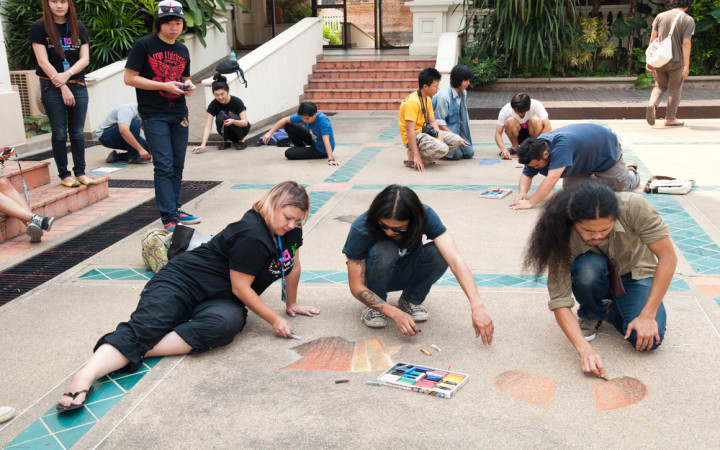Today’s Wonder of the Day was inspired by Wonder Friend. Wonder Friend Wonders, “How do street artists make their pictures look so real?” Thanks for WONDERing with us, Wonder Friend!
Do you love art? Many kids are naturally creative. They might use pens, pencils, crayons, markers, paint, clay, yarn, sidewalk chalk, or anything else! They can create works of art that are priceless to their parents.
People make art on many different canvases. Of course, paper is a favorite for many children. Some artists, though, think outside the box and make art on ceilings or even on the side of buildings.
In cities, some artists have turned ordinary streets into fantastic works of art. This type of art is called by many different names. You may know it as street painting, pavement art, street art, or sidewalk art. Have you ever seen street art in your city?
Street art is by its very nature temporary. After all, people still have to use the streets! For that reason, many artists use materials that can be removed easily. One of the most popular materials is sidewalk chalk.
Street art isn’t a new phenomenon. Would you believe that pavement artists—called screevers—have been around in England since the 1700s? Historians believe that over 500 street artists made a living from creating street art in London alone by 1890.
Screevers did more than just make beautiful pictures. They would often add poetry or political commentary to their artworks. In this way, they created visual images of what was going on in the world around them.
Today, street artists turn simple streets into eye-popping works of art. Some of their pieces seem to jump off the pavement to reach out and grab you.
How do street artists make these incredible 3D works of art? It’s all a matter of perspective. Street artists use techniques that have been around for hundreds of years.
First, they decide how the picture should be viewed. In other words, where will most people be standing to look at the picture? With this information, they keep in mind the fact that objects that are farther away appear smaller. Then, they can plan a work of art that creates the illusion of three dimensions on a flat surface.
Have you ever seen a work of 3D street art? You have to be standing in the right position to fully appreciate the illusion. If you’re standing in the wrong area, the work of art will look smeared or distorted. If you can’t see what it’s supposed to look like at first, just move around the artwork until the picture comes into view!
Standards: CCRA.L.3, CCRA.L.6, CCRA.R.1, CCRA.R.2, CCRA.R.4, CCRA.R.10, CCRA.SL.1




